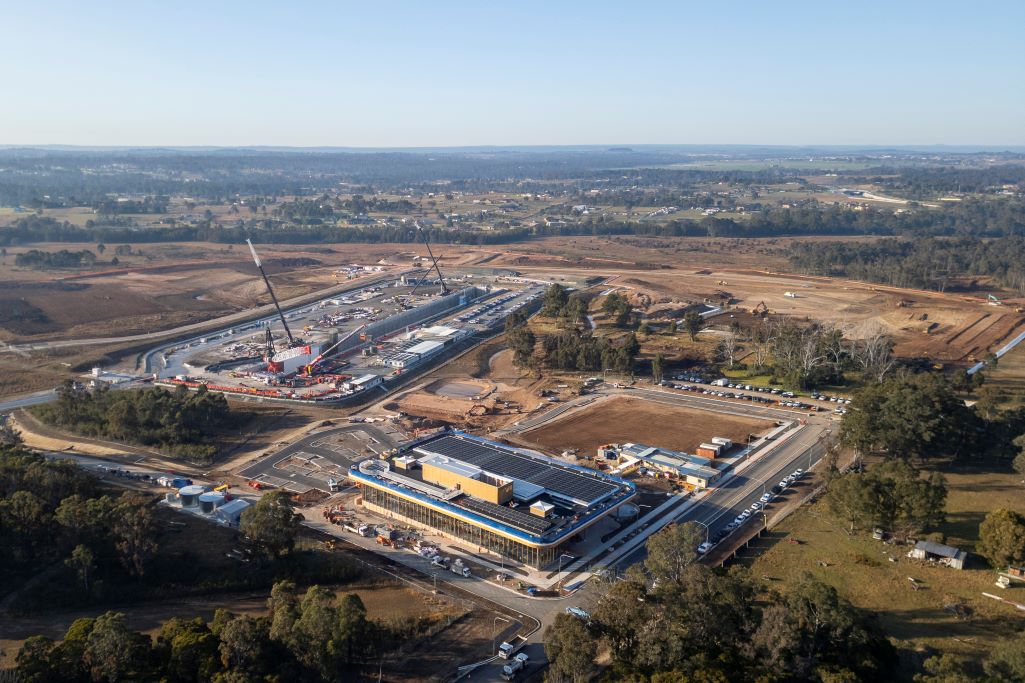
Development at Bradfield City Centre continues to forge ahead with works progressing on site.
Covering approximately 38 hectares of land, the works will deliver new master planned roads, streetscapes, and services for almost 35 per cent of the new city by mid-2025.
This will enable the private development of Superlot land parcels at Bradfield City Centre and accelerate growth of the new city.
Over 150 thousand cubic metres of material, enough to fill 60 Olympic swimming pools, will be cut and filled in this stage. This will create:
• 4 kilometres of new roadways
• 8 kilometres of dedicated cycle and pedestrian paths
• On-street parking for 178 cars
• 4 kiss and ride points, 3 taxi and 2 bus bays adjacent to Bradfield Metro Station
• Streetscapes lined with 600 trees
• In-ground services including potable, recycled and wastewater, electrical and fibre network
communications, supporting development in future Superlot land releases
• Provision for 132kv electrical transmission supply
• With world-class sustainability underpinning Bradfield’s development, a more sustainable
solution for road construction will be achieved using an innovative recycled asphalt product
containing salvaged waste products diverted from landfill, while all in-situ concrete elements
will be constructed with green concrete.
The works are being delivered by local civil business Western Earth Moving (WEM Civil), highlighting the economic benefits an urban development project of this size can bring to the
region from day one.
Bradfield is a planned new city located right next to the new airport also under construction between Macarthur, Liverpool, Penrith and the Blue Mountains
“This is another exciting step showing the momentum underway at Bradfield City Centre,’’ says Bradfield Development Authority CEO Ken Morrison.
With the First Building near completion, the high-tech Second Building and Central Park progressing, and the first land release under way, these enabling works will help to fast-track
further growth of the future city and drive economic outcomes in the region.”
